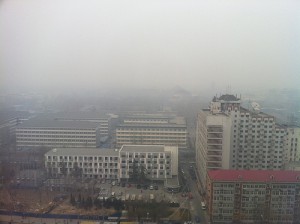
The Challenge of Chinese Soft Power
Much ado has been made about burgeoning Chinese soft power, and how China is increasing its public diplomacy and extending its soft power reach. From expanding the number of Confucius Institutes around the world, to a growing international broadcasting effort, China has been actively working to wield more signficant soft power influence.
And then I read this CNN headline: “China says no pills made from human flesh in country.” This stems from a report by the Korea Times that the Korean Customs Service had arrested 29 smugglers who were attempting to bring in 11,000 of these pills, allegedly containing ground up aborted human fetuses. Levels of disgust aside, what does this say about perceptions of China?
More than this being a case of possible misinformation, this is a question of nation branding, and practices in China that could lead individuals, whether the story is true or not, to give it credence.
China’s unparalleled rate of industrialization and economic growth has not come without volumes of stories about lead contamination, counterfeiting, quality control, and pollution—all leading people to ask, “What’s next?” Aside from the horrible “blood-libelous” nature of this story, it’s almost not surprising given the stories of contaminants in consumables. Though certainly there is a difference between government black market activities and the conduct of legal business in China, China faces an image issue where that line is rather blurry.
The manufacturing capability of a country has immediate soft power connotations. Many products are inately linked to specific countries, and sometimes give people what they perceive to be a connection to that country. Think French wine, German cars, or Japanese electronics.
But what immediately comes to mind when you think of products made in China? Cheap. That’s not to say that cheap is necessarily a bad thing (and Americans love cheap stuff)—just that “quality” is rarely associated with Chinese goods.
Yet product quality is just one issue amongst many for China. Even China’s most notable efforts at soft power management have not been without their issues.
Though the Beijing Olympics aimed to show China at its best (and it was certainly an impressive showing), some of China’s problems were visible right through the temporary façade. Beijing had to make a considerable, and widely reported effort to reduce air pollution in the city. Protests over Tibet interrupted the Olympic torch relay and culminated in the unfurling of a massive banner over an Olympics billboard outside China’s state TV headquarters, challenging the official Chinese narrative.
Most recently, the Chen Guangcheng fiasco at the U.S. Embassy hasn’t shined well upon the Chinese, nor the U.S. for that matter. And on top of that, China just kicked out Al Jazeera English.
In the end, despite China’s attention to improving its image abroad, it faces a great deal of soft power and branding challenges. These will not be easy issues to overcome, especially as much of China’s growth is characterized by questionable industry standards, and nation branding takes behavioral and perceptual changes over long periods of time. It will take far more than international broadcasting and cultural diplomacy to change China’s image—China will actually have to do things that actually change its image.







[…] Wallin: The Challenge of Chinese Soft Power […]
[…] However, despite China’s recent soft-power attention, I contend that there are still many issues problematic for the Chinese to overcome. To read about some of the challenges the Chinese face in their efforts to attract the world, take a look at my previous post in May. […]
[…] Matthew Wallin has blogged about China’s soft power woes: the branding challenges Chinese businesses face, particularly, come with a growing list of horror […]